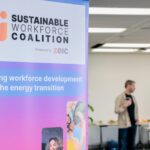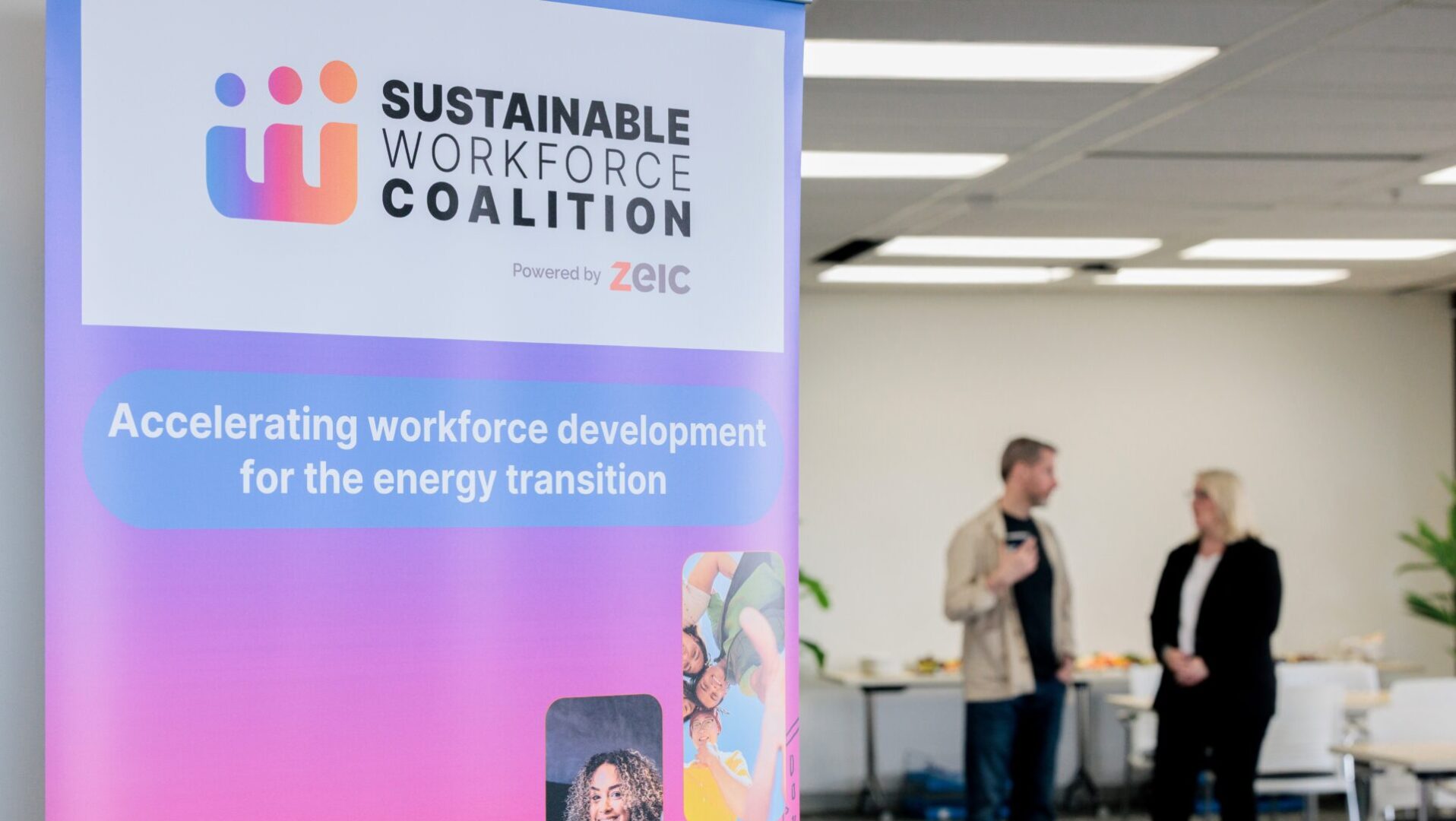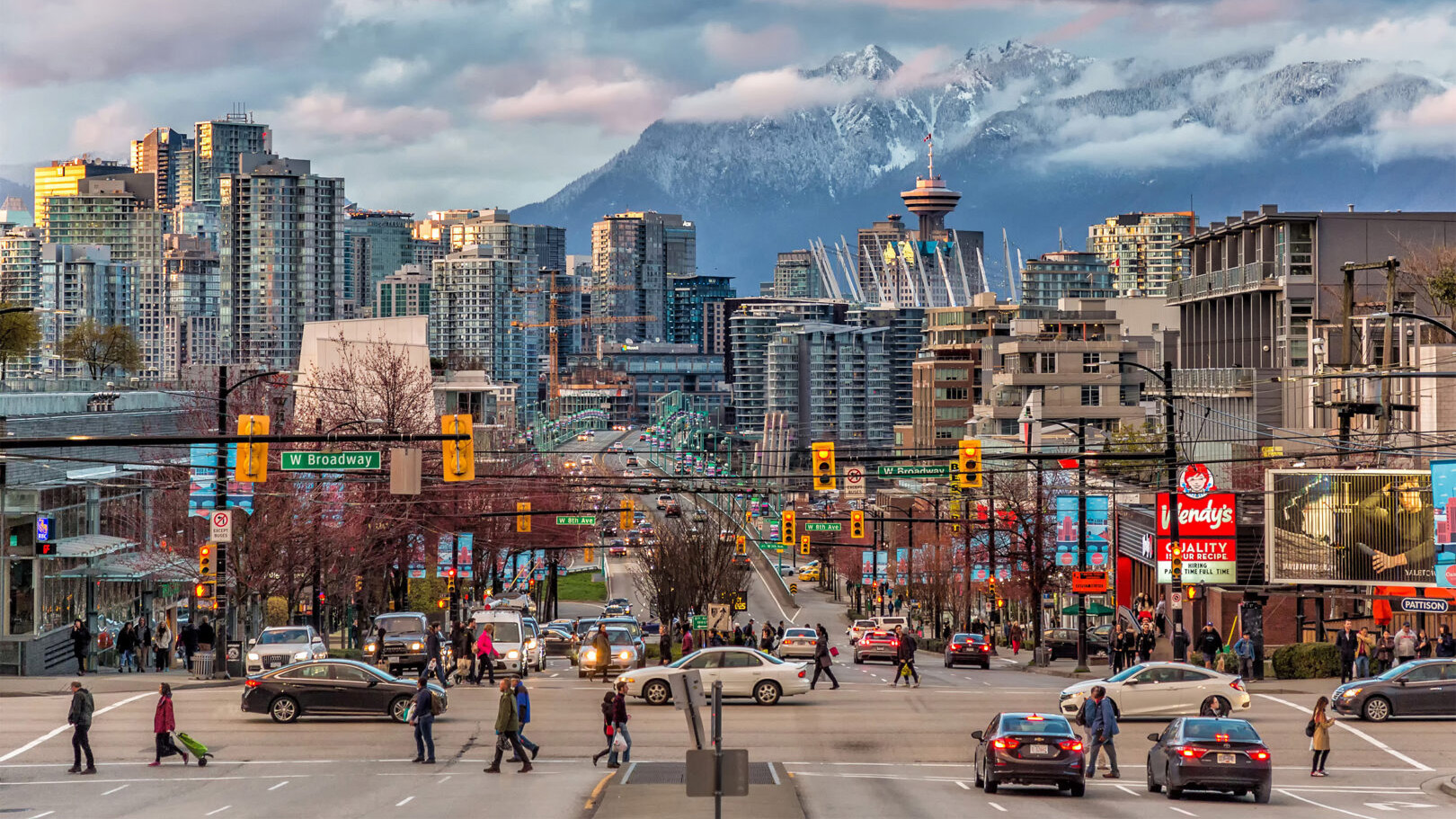
Now Hiring: Sustainable Workforce Coalition Program Development
July 22, 2025
Student Energy partnered with the Zero Emissions Innovation Centre’s (ZEIC) Sustainable Workforce Coalition (SWC) to analyze youth attitudes towards working in British Columbia’s clean economy, and the challenges and barriers in attracting, retaining, and supporting youth workers in this sector.
Attracting new and diverse workers into the clean economy is more than just a passing trend—it’s an urgent priority. As industries transition from fossil fuels to clean energy, a fresh influx of creative minds, varied perspectives, and bold ideas is critical to help address climate change and build sustainable communities for everyone. The stakes are high: this transition won’t succeed without a committed, well-supported workforce ready to move our cities—and our planet—toward a healthier, more equitable future.
According to the 2024 C40 report on green jobs in North America, Metro Vancouver alone is home to 185,000 green jobs—including “direct” roles, like heat pump installers, and indirect roles, where people provide supportive services like accounting that support clean economy outcomes and organizations.
Despite this historical growth, the future availability of workers remains an ever-increasing challenge. that one crucial climate solution—retrofitting existing buildings—will significantly increase the demands on already-stretched occupations in the trades, where new job growth will meet existing waves of retirements.
Finding more and more diverse workers, is therefore of crucial importance.
In 2024, the SWC partnered with Student Energy to better understand how to enable this outcome.
The research consisted of interviews with industry stakeholders, including hiring managers, recruiters, and HR professionals, as well as a survey capturing insights from youth across North America seeking opportunities in the sustainable workforce. To complement the survey findings, detailed interviews were also conducted with youth job seekers, to present a comprehensive view of challenges and workforce needs.
The SWC worked with a team of one Student Energy coach, Andrea Balcazar, and five students from around the world, including Ryan Yip, Amanda Nogueira Moreira de Souza, Remedios Abrica, and Blair Tran. Victoria Lim, now a ZEIC staffer herself, was also part of the student team.
Key takeaways and implications:
The team’s analysis reveals several key findings:
- Strong youth interest in green jobs: Reflecting the findings of past research, respondents are either employed in or actively seeking careers in the clean economy underscoring the sector’s appeal to young professionals
- Barriers to entry remain a significant challenge: Lack of information about career pathways, financial constraints for early-career roles, and workplace diversity issues hinder access to green jobs.
- Employers need to provide more structured support: Training programs, clear career advancement pathways, and competitive wages would enhance job satisfaction and retention.
- Job seekers have mixed experiences in the clean economy job market: While many find opportunities aligned with their values, challenges such as unclear hiring processes, unrealistic expectations (subject matter expert-level experience for entry-level jobs) and unrealistic workload expectations once hired all create frustration.
While green jobs offer promising opportunities for youth engagement, addressing structural barriers will be essential in ensuring a more accessible and rewarding career landscape in the sustainability sector.
Recommendations:
To support young professionals and bridge the skills gap in the green job market, employers in clean economy sectors – particularly those working on the energy transition should:
Hiring processes
- Enhance transparency & communication: provide clear expectations regarding job roles and qualifications.
- Make hiring more engaging: The process should feel welcoming and interactive, reducing the impersonal nature of many applications.
- Collaborate with educational institutions: Strengthening partnerships with educators as an employer can help better align postings to the actual skills and competencies of recent graduates.
Clear & accessible job descriptions
- Use straightforward language to describe roles, ensuring clarity for early-career professionals.
- Explain how each role directly supports sustainability goals, making positions more appealing to mission-driven job seekers.
Support for diverse youth in the energy workforce
- Highlight career growth: Clearly outline short-term and long-term development opportunities in job postings.
- Showcase impactful work: communicate how young professionals contribute to meaningful clean economy outcomes and impacts.
Emphasizing environmental & social impact
- Quantify impact: Companies should share measurable sustainability achievements and goals through reports, case studies, and public disclosures.
- Link roles to broader sustainability objectives: Job descriptions should highlight how each position contributes to environmental and social progress.
Expanding talent pools beyond “traditional” majors
- Encourage interdisciplinary talent: welcome candidates from diverse academic backgrounds, not just sustainability-specific degrees.
- Recognize transferable skills: design roles in ways that recognise work in the clean economy requires adaptability and cross-sector knowledge rather than narrow expertise.
- Provide training & upskilling: invest in on-the-job learning opportunities can help diverse candidates transition into green careers successfully.
By implementing these strategies, employers can increase their likelihood of hiring the best and brightest looking to make a difference in their organizations, and contributing to the building of a strong and fair clean economy for all.




